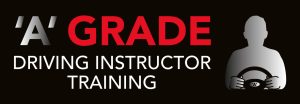Part 8, see it, say it, suss it & sort it
Hi, this is eighth and last article on Bob Morton’s, “see it”, “say it”, “suss it” and “sort it” system.
In this section I was going to summarize the whole system to make sense of it.
Ok, let’s start with summarizing the “see it” part of the system. Like a chain if one part of the chain is neglected, then the chain fails!
“See it” is to spot the developing hazards and your pupil actions, facial expressions and body language. If this not done correctly, it could easily lead to either potential danger or misinterpretation of your pupil thoughts, beliefs and feelings leading to a decrease in the amount of learning that takes place.
“Say it” this is the words you use to control the risk of the lesson by either guiding (talk through) or prompts (remind them what they should be doing). Also, it’s the feedback you give to your pupil either on the move or whilst stationary. You can either elicit the information from them or tell them if they don’t know.
Both “See it” & “Say it” come under the general heading of risk identification.
“Suss it” is split into two different components-
The cause-Finding why something happened is absolutely essential. It’s more important to know why something went well than something that didn’t go well. If something did go well in the lesson, and the pupil knows why, then they are more likely to do it again. However, if something doesn’t go well then, we need to find out the cause or better still your pupil needs to know the cause as if you don’t the same error will reappear again. This is where a good honest open relationship is essential, so the pupil is not embarrassed to tell you why something happened. Sometimes they don’t know the cause, that’s why the “seeing it” part of the system is important, as the cause may be observed by the instructor.
The consequence-Pupils really need to know what would have happened if you haven’t of intervened either verbal or physical in a safety critical situation. This increases their awareness and hence can take more responsibility in a similar situation as they know the consequences or the risk if they get it wrong.
“Sort it” is split into two different sections as well. These are
Change the plan- This is where the lesson may require adapting to your pupil’s needs. This can be for a variety of reasons, like your pupil is finding the lesson too difficult, too easy, the learning strategy is not working or after a safety critical situation where you intervened either verbally or physically or something that you pupil needs you to do, like give them praise and encouragement (this should be done on all lessons!).
Level of support- This is the support we are providing to help the pupil achieve the objective that as been set for the lesson. This should be agreed with the pupil before trying to achieve the task, so they know what is expected from you and from them.
Finally word, I hope you have found these articles of use. However, I must stress that “Knowing is not enough, you must apply!” (the great Bruce Lee).
What I mean by that is that you must put in the effort into your training to become a driving instructor or being a better one. You should invest in yourself by taking regular training that benefits you and then recording the result by use of a reflective log. This training can either be done in car (my preference) or in class (I love to lark about too much!).

